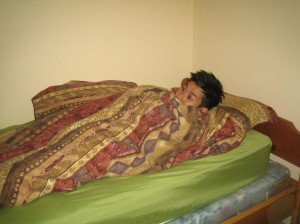Methicillin-resistant staphylococcus aureus (MRSA) is a type of bacterial infection that is becoming quite common in various countries around the globe. It is difficult to treat since it is immune to various antibiotics utilized in treating a variety of staph infections.
It is important to note that MRSA can manifest in various parts of the body. It can infect the intestines, lungs or deep within other bodily organs. The most common MRSA infections occur on the skin. It is sad to note that MRSA skin infections can be mistaken as a spider bite even by doctors. If an individual suspects that a spider bite starts to grow in size, a doctor should be consulted as soon as possible.
Symptoms of MRSA skin infections

It is vital to determine if it is an MRSA skin infection before consulting a doctor. Without proper testing, there is no way to know if a reaction comes from MRSA, streptococcus, staph or other type of infection. Remember that infections cannot be identified with a picture alone. Regardless of the cause, any infection that does not seem to heal in a few days must be carefully assessed by a doctor. The indications of MRSA skin infection include the following:
- Pain
- Swelling
- Redness
- Boils or blisters
- Oozing or drainage of pus from the sore
- Area around the sore is warmer
The MRSA symptoms can affect other parts of the body. You have to watch out for body aches, generalized weakness and fever. Remember that this is an infection which means that the body fights it just like any type of infection. Once any of these signs and symptoms are present, it is best to consult a doctor.
Invasive MRSA symptoms
Oftentimes, the infection can invade the body such as the lungs. Once this occurs, it is called as invasive MRSA. The moment staph or MRSA infection affects other parts of the body aside from the skin; it can mimic a number of conditions with the following symptoms.
- Cough
- Shortness of breath
- Chest pain
- Fainting
- Fever or chills
- Weakness or exhaustion
- Dizziness
- Headache
- Body aches
Some of these indications are serious enough to seek medical care regardless of the cause. Remember that the treatment for MRSA requires prescription antibiotics given by the doctor. If an individual suspects that he/he has symptoms of the infection, it is vital to cover it with a bandage and consult a doctor. In most cases, the doctor might cut into the infection and drain it. Do not attempt to drain the infection since you might end up spreading it to other areas of the body.
Once antibiotics are prescribed by the doctor, you have to ensure that the individual will finish the complete regimen as directed. The individual should not stop taking the medications even if he/she starts to feel better.
